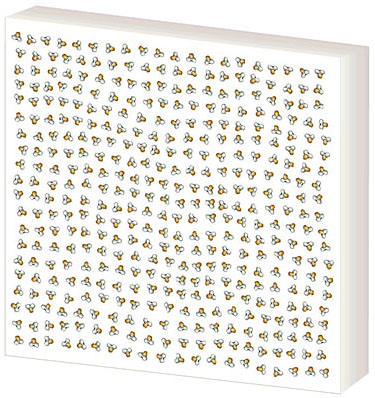(For review by Marks & Spencer -- May 2000)
Kelly Heaton and Steve Gray
This project is funded in part by the MIT Council for the Arts and the MIT Media Laboratory.
Questions? Please contact Kelly Heaton: kelly@media.mit.edu
Please note that these design specifications are for preliminary review only and may be subject to change.
Furby(TM) is a trademarked product of Tiger Electronics.
Concept
20/20 Refurbished is a 7 x 7 foot reactive
composition made of 400
Furby™ pixels. The installation
will not reflect the viewer passively. Instead, the pixels of 20/20
Refurbished are designed to look and talk back, thereby creating a
circular dialogue between the observer and the observed. The image resolution
of 400 Furby™
pixels is sufficient that a viewer who approaches the piece will witness
their silhouette in a dynamic, life-sized
composition of sight and sound.
Not only will 20/20 Refurbished entertain, it will challenge our
perception of the contemporary reflection.
![]()
The open and closed states of a Furby™ pixel. When a pixel detects a viewer, it opens its eyes and speaks. Hundreds of Furby™ pixels talking at the same time form a dynamic reflection of the viewer. When no one is standing near the display, the pixels will close their eyes and wait quietly.

Design Requirements
The display measures 7 feet tall, 7 feet wide and 1 foot deep. The front and sides of the display form a continuous, semi-reflective white structure that is rectangular. 400 shapes are cut into the front surface to mount the pixels (a CAD diagram and/or postscript file will be provided with the layout specifications). A choice of material and fabrication technique is currently under consideration. Note that the front of the display is not flat, but slightly concave, as shown here.
The placement
and rotation of each pixel will be pre-determined according to the molecular
structure of water. In other words, the formal shape of the Furby™ pixel
will be compared with the structure of a water molecule (H2O). This
reference makes a visual and conceptual comparison to a reflective pool,
such as the water in which Narcissus admired his own reflection. Link
here for a detail of this effect.
The display will be installed leaning against a white wall. The power
requirements are estimated to be 1200 watts. There should be no obstructions
within a 8 foot radius of the display. The installation may also require
specific lighting conditions, such as limited exposure to sunlight and
other sources of infrared that could interfere with the detection system.
Technical
Description
The physical pixels of 20/20 Refurbished are made from the 1999 Limited Edition Christmas Furby™, modified to reveal only the eyes and mouth in a softened triangular shape. For a diagram of the refurbished pixel, link here. Each pixel will be actuated by a motor to achieve two visible states, open (and talking) or closed (and silent). The pixels will be augmented with a PIC16F876 microcontroller that prompts the Furby™ to speak in response to viewer proximity, as determined by an infrared detection system. Although the Furby™ pixels retain their original logic, the added microcontroller will be programmed to control their behavior in an unorthodox manner. Whereas Furby™ normally has sensors that respond to "real" interaction by a human or another Furby™, such as tummy tickling, back rubbing and infrared communication, the added microprocessor will cause the Furby™ pixel "think" these inputs are occurring even though the inputs to the pixel are fully simulated, or "virtual." All of the normal sensors of the Furby™ will be disconnected and replaced by our custom software. When the infrared emitted by each pixel is bounced off the presence of a viewer, an invisible relationship will be made manifest through the response of the artwork.
The image to the right shows a sequence of infrared pulses sent out by the Furby™ pixels. Infrared reflected off of the viewer will trigger the Furby™ pixel to animate. When infrared is not reflected back, the pixel will remain dormant but watching (eyes closed, quiet, and strobing with infrared). An observer who enters the sensing range of 20/20 Refurbished (approximately 6 feet) will experience hundreds of little creatures looking and talking back at them in the form of their silhouette.
